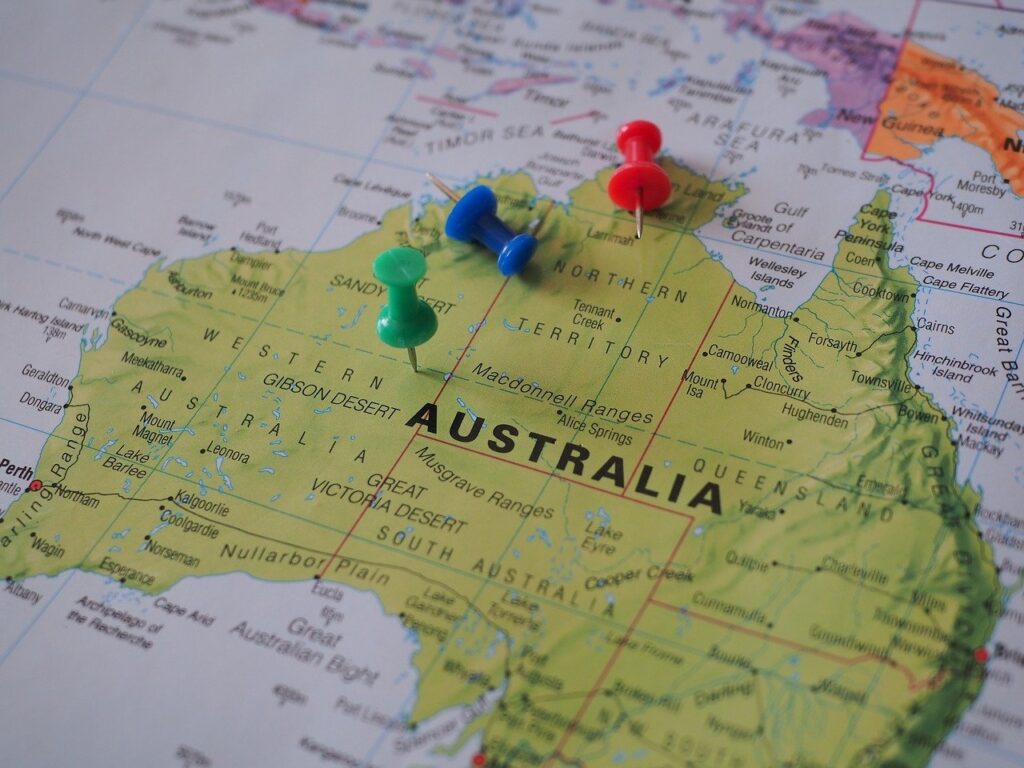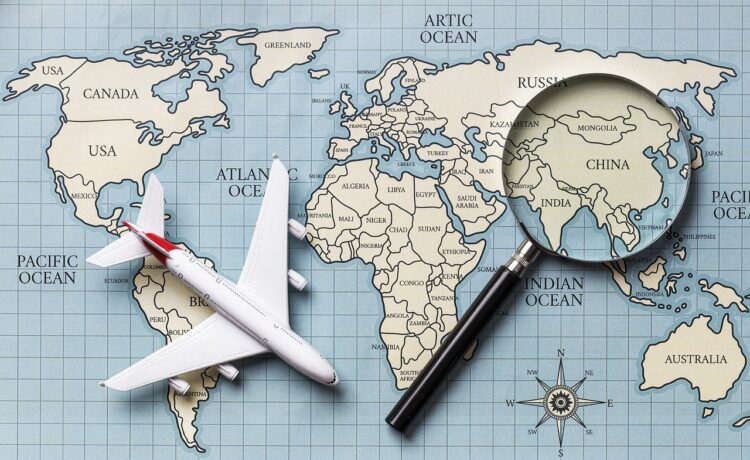The disappearance of MH370 Malaysia Airlines on Google Maps is one of the most baffling aviation mysteries in modern history. On March 8, 2014, MH370, carrying 239 passengers and crew members, took off from Kuala Lumpur, bound for Beijing. What was supposed to be a routine flight turned into a tragedy when the plane abruptly lost contact with air traffic control less than an hour after takeoff. Despite years of extensive searches and multiple investigations across vast swathes of ocean, the main wreckage of the plane has never been conclusively found, and the exact fate of MH370 remains unknown.
The plane’s sudden vanishing sparked global media attention, intense speculation, and countless conspiracy theories. Was it a catastrophic mechanical failure, a hijacking, or perhaps something more sinister? These questions, paired with the lack of physical evidence, have left aviation experts and the families of the missing passengers grasping for answers for nearly a decade.
The Role of Google Maps in Modern Investigations
Google Maps, a tool that, while originally designed for navigation and exploration, has surprisingly become a part of modern investigations. In an era where satellite imagery is easily accessible to the public, everyday individuals have begun using Google Maps to assist in various searches, from missing persons to hidden historical sites. In the case of MH370, enthusiasts and amateur investigators have turned to Google Maps’ detailed satellite imagery, hoping to uncover clues that might lead to the plane’s location.
What makes Google Maps particularly appealing for such investigations is its vast, up-to-date collection of satellite images covering most of the globe. This means that anyone with an internet connection can zoom in on remote areas—like the middle of the Indian Ocean—and potentially spot something that search teams may have missed. The idea is simple: With enough eyes scanning the satellite imagery, someone might stumble upon a piece of debris or a disturbance in the ocean that could lead to new insights about the missing plane.
What Happened to MH370?
Malaysia Airlines Flight MH370 vanished on March 8, 2014, while en route from Kuala Lumpur to Beijing with 239 people on board. It left the aviation world and the public in shock, as search efforts spanning multiple countries failed to locate the aircraft.
Timeline of Events Leading to the Search
In the initial hours following its disappearance, no distress signals or clear signs of technical malfunction were reported, which made the search even more complex. Over the following weeks, various efforts to detect the flight’s debris in the Indian Ocean were largely unsuccessful.
Initial Theories
As time passed, several theories emerged, ranging from hijacking to possible mechanical failure or pilot intervention. However, none of these have been definitively proven, and the final location of the plane remains unknown to this day.

Google Maps as an Investigation Tool
In recent years, people have turned to Google Maps in hopes of finding answers about MH370. While traditionally used for navigation, Google Maps and its satellite imagery have been employed by amateur investigators to search remote areas, often unreachable by traditional means.
How People Use Google Maps for Research
Google Maps provides detailed satellite imagery that allows users to explore various terrains. This has enabled armchair detectives to scan potential crash sites from the comfort of their homes. With billions of data points and ever-updating images, Google Maps has become a go-to resource for those hoping to spot clues that might have been overlooked by official investigators.
Previous Investigations
In the past, Google Maps has been used in missing person cases and even environmental studies. Some notable finds include lost ships and even hidden archaeological sites, sparking interest in how this technology could help with aviation investigations.
Clues About MH370 Malaysia Airlines on Google Maps
Recently, there have been multiple claims from individuals saying they’ve found MH370 through MH370 Malaysia Airlines on Google Maps. These reports often show what appear to be shapes or objects in bodies of water or in remote areas that resemble parts of a plane.
How Google Maps Reveals Potential Locations
When users zoom in on specific locations via Google Maps, satellite images can reveal objects that otherwise might not be detected from the ground or by airplanes. Enthusiasts argue that these could include plane debris or crash-related markings that resemble wreckage patterns.
Notable Findings or Patterns
While none of these discoveries have been officially validated, users have shared images online pointing to irregular shapes in the Indian Ocean and other locations. The debate continues as to whether these images are substantial or mere coincidence.
How Satellite Imagery Can Be Misleading
Despite its advanced features, Google Maps is not foolproof when it comes to locating missing objects like airplanes. Many of the satellite images displayed on Google Maps can be several months or even years old. Additionally, there are numerous visual distortions, reflections, and artefacts that can easily trick the eye.
Potential for False Positives
For example, cloud formations, underwater sand patterns, or even shadows of ships can sometimes look like airplane wreckage. It’s easy to see why some individuals mistake these optical illusions for plane parts.
The Public’s Role in the MH370 Search
What’s intriguing about the use of Google Maps is the opportunity for public involvement. Since the search for MH370 has spanned nearly a decade without concrete results, many believe that crowdsourcing might offer the key to unlocking the mystery.
Crowdsourced Efforts
Several platforms have emerged, inviting the public to scour satellite images and report any findings. These efforts have provided hope to many, including the families of victims, who wish to see closure.
The Role of Technology in Aviation Investigations
Aside from Google Maps, modern aviation investigations use a wide range of technologies, from satellite tracking systems to sonar imaging. These tools complement traditional search efforts and offer deeper insights into the potential resting place of missing aircraft.
Complementary Technologies
For example, the use of autonomous underwater drones has been instrumental in scanning the ocean floor for any debris. These high-tech tools, while expensive, often yield more reliable data compared to publicly available satellite images.
Theories Based on Google Maps Findings
As people continue to pour over Google Maps data, new theories about MH370’s fate keep emerging. Some believe that the plane might have crashed in remote areas still unsearched, while others suggest it might have been buried under layers of sediment in the ocean.
Can These Clues Solve the Mystery?
Though compelling, many of these theories remain speculative until verified by actual search missions. The idea that Google Maps could lead to a breakthrough has certainly gained traction, but experts caution against jumping to conclusions based solely on satellite images.
Experts Weigh In: Is Google Maps Useful for MH370?
Many aviation experts agree that while Google Maps is a powerful tool for everyday use, it may not be the best option for locating missing airplanes, particularly when considering the vast and remote areas involved in the MH370 search.
Opinions from Authorities
Officials have largely emphasised the importance of physical evidence and data from official search operations, noting that while satellite images might spark new interest, they cannot replace on-site investigation efforts.
Ethical Considerations
The families of those on board MH370 have endured years of uncertainty. Speculation surrounding potential clues found on Google Maps can bring false hope or additional heartache if they prove inaccurate.
Impact on Families
While the search continues, it’s important to handle any findings with care and respect for those who have lost loved ones in this tragedy.
Conclusion
Can MH370 Malaysia Airlines on Google Maps? While the platform offers a unique way for the public to engage in the search, the reality is that we may need more conclusive evidence from professional investigations to find the truth. That being said, the possibility that everyday technology like Google Maps might hold the key to unlocking one of aviation’s greatest mysteries is an exciting prospect.
FAQs About MH370 Malaysia Airlines on Google Maps
- Can Google Maps actually solve the MH370 mystery?
While Google Maps provides interesting clues, it’s unlikely to single-handedly solve the mystery without corroboration from other technologies and expert investigations.
- How reliable are satellite images from Google Maps for investigations?
Google Maps images are not always up-to-date or high-resolution, so they can be misleading in some cases, making them less reliable for detailed investigations.
- What are the most credible theories about the disappearance of MH370?
Credible theories range from technical malfunctions to human intervention, but the lack of physical evidence has made it difficult to prove any single theory.
- Have there been any confirmed sightings of MH370 on Google Maps?
No confirmed sightings have been made on Google Maps. Most claims are speculative and have not been verified by authorities.
- How can the public help in the search for missing planes like MH370?
The public can participate in crowdsourced efforts to scan satellite images and report potential findings, though official investigations remain the primary means of searching.













